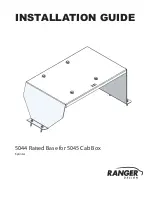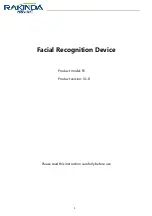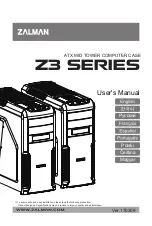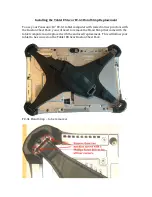
Changing the Configuration Settings
You can modify all of the settings you configured in the initial
setup.
1
Select >
System
>
Device Reset
>
Initial Setup
.
2
Follow the on-screen instructions.
Time Zones
Each time you turn on the device and acquire satellites, the
device automatically detects your time zone and the current
time of day.
Device Information
Specifications
Edge Specifications
Battery type
Rechargable, built-in lithium-ion battery
Battery life
15 hours, typical usage
Operating temperature range From -20º to 60ºC (from -4º to 140ºF)
Charging temperature range
From 0º to 40ºC (from 32º to 104ºF)
Water rating
IEC 60529 IPX7*
*The device withstands incidental exposure to water of up to
1 meter for up to 30 minutes.
Heart Rate Monitor Specifications
Battery type
User-replaceable CR2032, 3 volts
Battery life
Up to 4.5 years (1 hour per day)
Operating temperature
range
From -5° to 50°C (from 23° to 122°F)
Radio frequency/
protocol
2.4 GHz ANT+ wireless communications
protocol
Water rating
3 ATM*
NOTE:
This product does not transmit heart
rate data while swimming.
*The device withstands pressure equivalent to a depth of
30 meters.
Speed Sensor and Cadence Sensor Specifications
Battery type
User-replaceable CR2032, 3 volts
Battery life
Approximately 12 months (1 hour per day)
Operating temperature
range
From -20º to 60ºC (from -4º to 140ºF)
Radio frequency/protocol
2.4 GHz ANT+ wireless communications
protocol
Water rating
1 ATM*
*The device withstands pressure equivalent to a depth of
10 meters.
Device Care
NOTICE
Do not store the device where prolonged exposure to extreme
temperatures can occur, because it can cause permanent
damage.
Never use a hard or sharp object to operate the touch screen,
or damage may result.
Avoid chemical cleaners and solvents that can damage plastic
components.
Secure the weather cap tightly to prevent damage to the USB
port.
Cleaning the Device
1
Wipe the device using a cloth dampened with a mild
detergent solution.
2
Wipe it dry.
Caring for the Heart Rate Monitor
NOTICE
You must unsnap and remove the module before cleaning the
strap.
A build up of sweat and salt on the strap can decrease the
ability of the heart rate monitor to report accurate data.
• Go to
for detailed washing
instructions.
• Rinse the strap after every use.
• Machine wash the strap after every seven uses.
• Do not put the strap in a dryer.
• When drying the strap, hang it up or lay it flat.
• To prolong the life of your heart rate monitor, unsnap the
module when not in use.
User Replaceable Batteries
WARNING
Do not use a sharp object to remove batteries.
Keep the battery away from children.
Never put batteries in mouth. If swallowed, contact your
physician or local poison control center.
Replaceable coin cell batteries may contain perchlorate
material. Special handling may apply. See
www.dtsc.ca.gov.hazardouswaste/perchlorate
CAUTION
Contact your local waste disposal department to properly
recycle the batteries.
Replacing the Heart Rate Monitor Battery
1
Use a small Phillips screwdriver to remove the four screws
on the back of the module.
2
Remove the cover and battery.
3
Wait 30 seconds.
4
Insert the new battery with the positive side facing up.
NOTE:
Do not damage or lose the O-ring gasket.
5
Replace the back cover and the four screws.
NOTE:
Do not overtighten.
After you replace the heart rate monitor battery, you may need
to pair it with the device again.
Replacing the Speed Sensor or Cadence Sensor
Battery
The LED flashes red to indicate a low battery level after two
revolutions.
1
Locate the circular battery cover
À
on the back of the
sensor.
14
Device Information






































